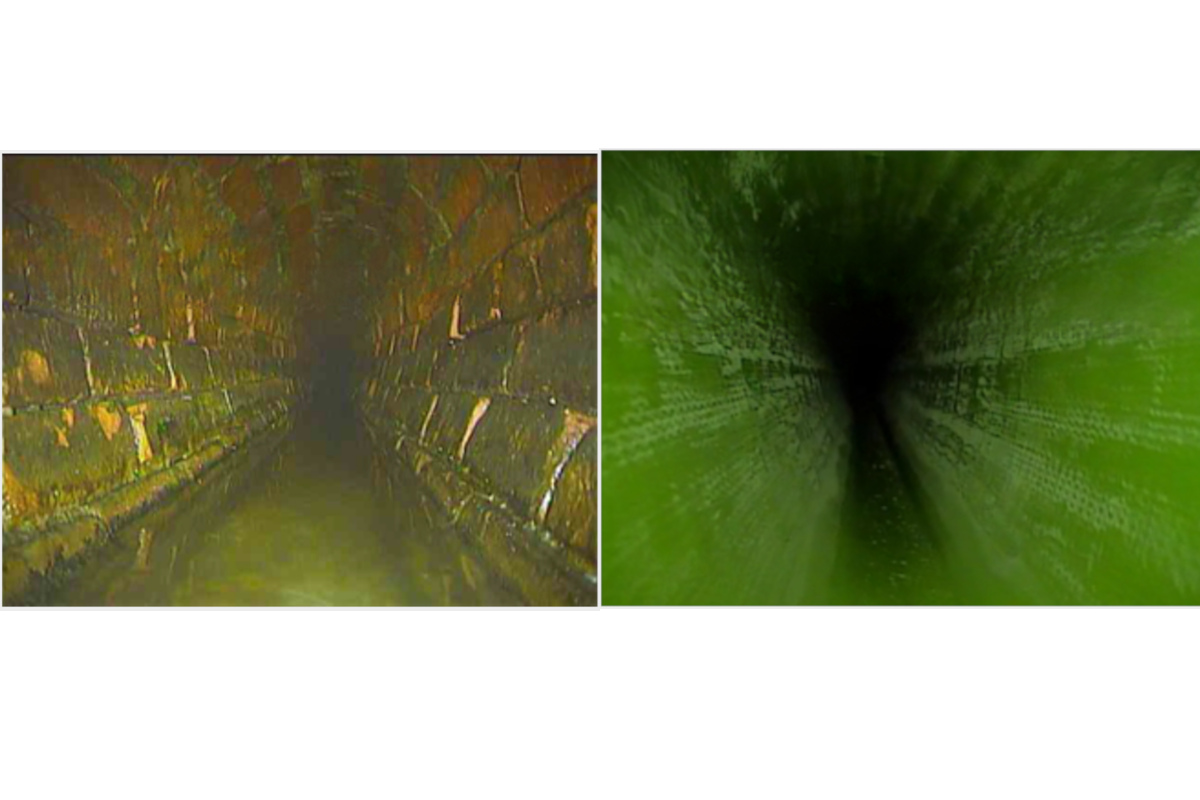
Tight Quarters Pipe Bursting in Maple Ridge
In the world of trenchless; projects are either big, record-breaking attention grabbers, or small and mundane.
While the small and mundane projects do not always get splashy awards and media coverage, they are just as important as their attention-grabbing brethren. Such is the case for a recent pipe bursting project in Maple Ridge, British Columbia.
The project involved upsizing 170 m of 200-mm asbestos cement (AC) sanitary sewer main to 250-mm high-density polyethylene (HDPE). The existing sanitary sewer main had significant deterioration and inflow and infiltration was a serious issue for the City of Maple Ridge. The main runs beneath a lane just south of Lougheed Highway between 224th and 223rd streets and is used by the local businesses and a residential tower to access parking.
The City is no stranger to pipe bursting, and due to a variety of circumstances, it proved to be the best method for replacing the sanitary main. Maple Ridge contracted PW Trenchless to tackle this project, which took place in a six-week span from January to March 2019.
“This is a fairly normal-sized project for us in Maple Ridge,” says Greg Deacon, project manager, PW Trenchless. “We have done some large bursts for the City, and we are about to start another one soon.”
RELATED: PW Trenchless Helps British Columbia’s Trenchless Market Grow
One of the recent “larger” projects for Maple Ridge, completed in 2017, was a record upsizing from 375-mm PVC to 850-mm HDPE through Kanaka Creek Park. The project earned the company Trenchless Technology’s 2017 Project of the Year Rehabilitation Honorable Mention.

One of the ways PW Trenchless eased access issues is by combining two
of the bursts into one and using a manhole to pull the new pipe through.
In the Lane
Installed in 1975, the line services the properties on the high side of the lane which consisted of commercial businesses, restaurants and one medium rise residential tower with commercial units on the ground floor.
“The main varied between 4- to 5-m in depth throughout the lane, the lane right of way was only 5-m wide and the sanitary main was located between a gas main to the south and a water main to the north,” says Andrew Lackner, project manager, City of Maple Ridge. “There were also over head utilities and poles on the south side of the lane. Additionally, due to the narrow lane right of way, the watermain offset varied down the length of the lane and would deflect out around the sanitary manholes and flare back in between the manholes. This left a very narrow off set from the sanitary main and made it very difficult to get shoring in between the watermain and gas main and leaving barely any room to work on the sewer main. Given the depth of the main, the location of the other utilities in the lane and the overall lack of space, an open cut method would have been near impossible.”
There are a total of 10 live connections, one connection to an empty lot on the main and four manholes on this segment of main — one at the top end, two more in the middle and one at 223 Street that tied into the rest of the system. Bypasses were completed on an as-needed basis, but there was not much in the way of bypass as the sanitary main was near the beginning of a run.
Before the shovels hit the ground, PW Trenchless worked with the city, the businesses and the residents to address access concerns. The underground entrance to the medium-rise building was located next to the main pit entrance and had to be closed during the 10-hour work day. PW Trenchless rented a nearby lot for parking and plated the pit after work hours for access to the parking garage. They also coordinated for deliveries and the garbage and recycling schedules since the lane provided access for all of those functions.
RELATED: Project of the Year 2017 Rehabilitation Honorable Mentions
The tight quarters proved challenging for PW Trenchless, which used its TT Technologies Grundoburst 800G to complete the burst, as well as a 22-ton 13.5-ton and a smaller 6-ton excavator to handle the HDPE and dig access pits. Subcontractors handled the soft digging – via vacuum excavation – around the existing utilities.

The space in the lane south of Lougheed Highway was tight,
but PW Trenchless had enough room to make the pipe bursting project work.
“The 800G from TT Technologies requires a minimum separation between these other utilities to be able to get down to the main and centered over the main to complete the burst,” Deacon said. “We were not positive that we had enough space. The existing 250-mm watermain was very close to this sanitary alignment and was unrestrained. We had to expose this watermain in a few areas and install restraints before we could continue our excavation to the sanitary main.”
PW Trenchless proposed a way to ease the process by minimizing the number of excavations from the original design. Initially designed as a three-burst project — 74, 53 and 42 m long — the contractor prosed combining the two shorter runs.
“The original design would have required another pit for the burst,” Deacon says. “Instead, we dug a smaller excavation at the middle manhole, chipped through it and pulled the pipe straight through.”
With the difficult access, pipe bursting seemed like the obvious choice to complete the project but, because of the difficult access, there were some doubts going in. By working through the challenges, and keeping an open line of communication among all parties, the project is complete and the line is in service.
The only setback during the process was a 6-day loss of work due to heavy snowfall.





